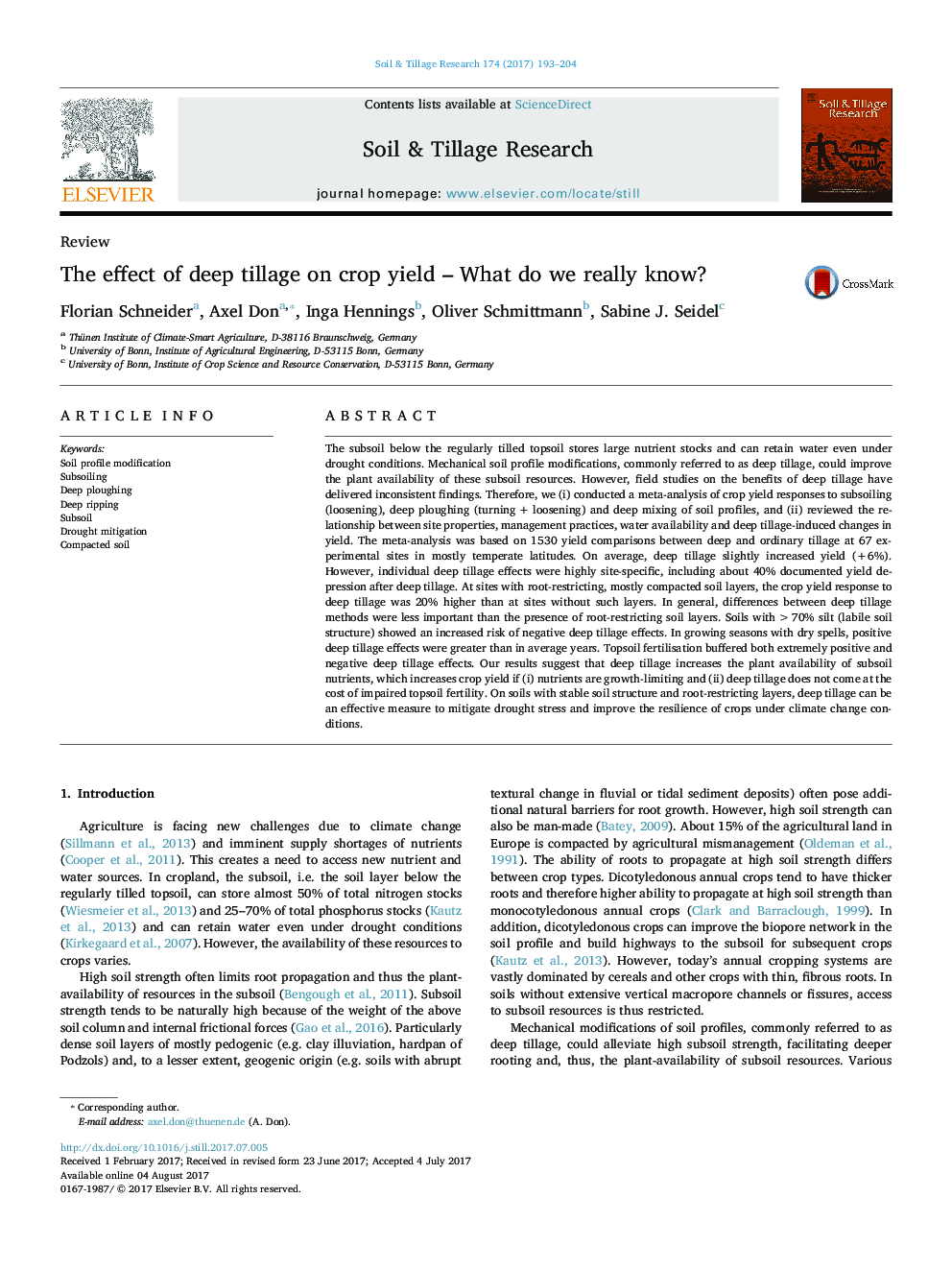| Article ID | Journal | Published Year | Pages | File Type |
|---|---|---|---|---|
| 4927467 | Soil and Tillage Research | 2017 | 12 Pages |
â¢We conducted a meta-analysis of crop yields following deep tillage (n = 1530).â¢Mean deep tillage effect on yield was slightly positive (6%) - but huge variability.â¢Deep tillage caused 20% yield increase on soils with root-restricting layers.â¢Silty loess soils have an increased risk of yield depression following deep tillage.â¢Deep tillage can improve the resilience of crops during droughts.
The subsoil below the regularly tilled topsoil stores large nutrient stocks and can retain water even under drought conditions. Mechanical soil profile modifications, commonly referred to as deep tillage, could improve the plant availability of these subsoil resources. However, field studies on the benefits of deep tillage have delivered inconsistent findings. Therefore, we (i) conducted a meta-analysis of crop yield responses to subsoiling (loosening), deep ploughing (turning + loosening) and deep mixing of soil profiles, and (ii) reviewed the relationship between site properties, management practices, water availability and deep tillage-induced changes in yield. The meta-analysis was based on 1530 yield comparisons between deep and ordinary tillage at 67 experimental sites in mostly temperate latitudes. On average, deep tillage slightly increased yield (+6%). However, individual deep tillage effects were highly site-specific, including about 40% documented yield depression after deep tillage. At sites with root-restricting, mostly compacted soil layers, the crop yield response to deep tillage was 20% higher than at sites without such layers. In general, differences between deep tillage methods were less important than the presence of root-restricting soil layers. Soils with >70% silt (labile soil structure) showed an increased risk of negative deep tillage effects. In growing seasons with dry spells, positive deep tillage effects were greater than in average years. Topsoil fertilisation buffered both extremely positive and negative deep tillage effects. Our results suggest that deep tillage increases the plant availability of subsoil nutrients, which increases crop yield if (i) nutrients are growth-limiting and (ii) deep tillage does not come at the cost of impaired topsoil fertility. On soils with stable soil structure and root-restricting layers, deep tillage can be an effective measure to mitigate drought stress and improve the resilience of crops under climate change conditions.
Graphical abstractDeep tillage effects on crop yields. Top: Overall distribution (violin plot, box plot and mean ± 95% confidence interval). Bottom: Significant drivers of yield response to deep tillage.Download high-res image (142KB)Download full-size image
